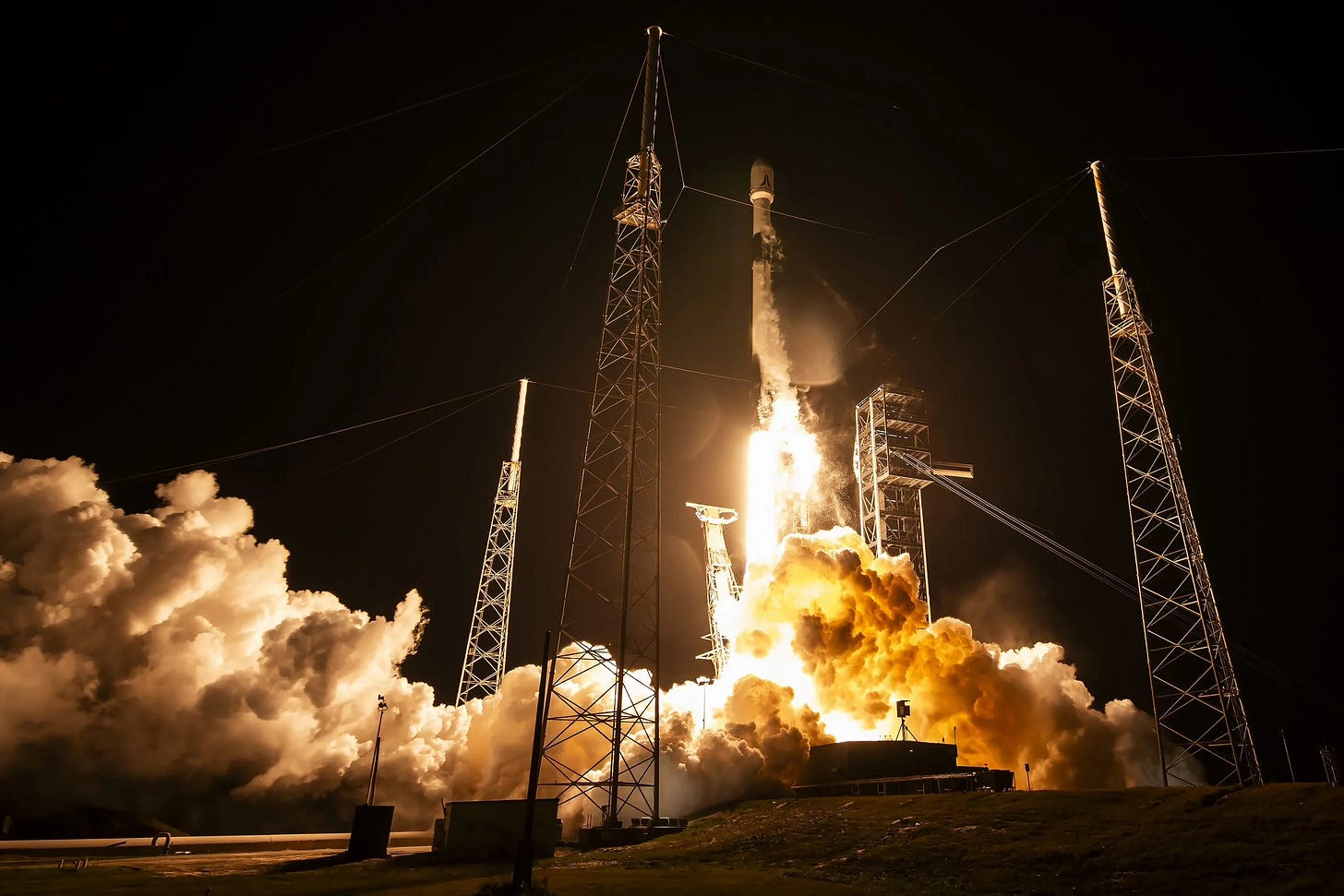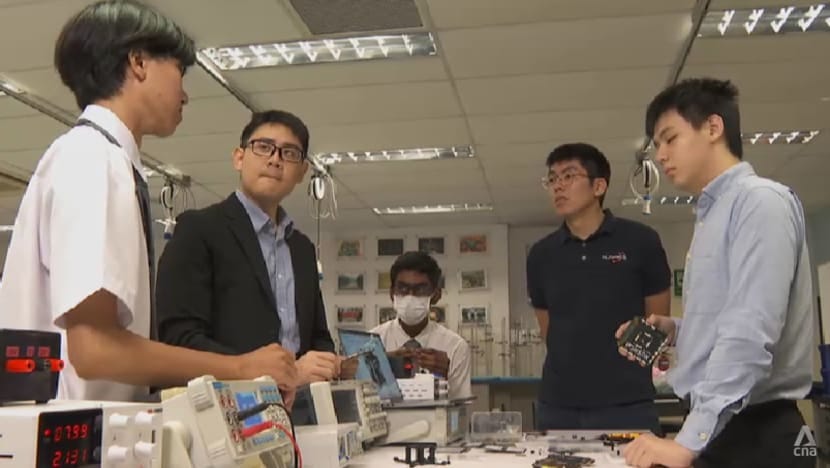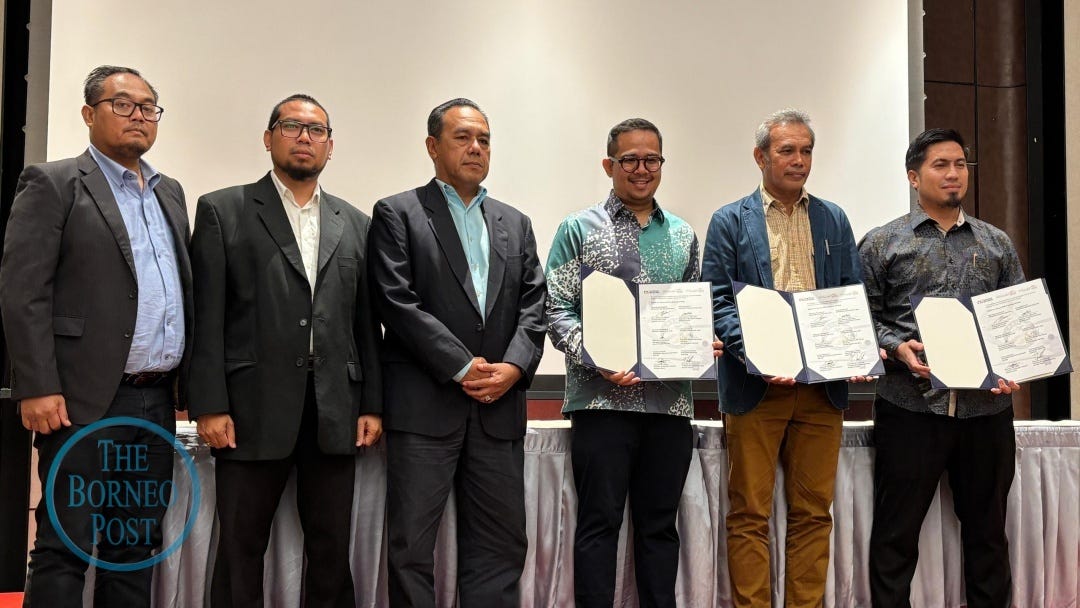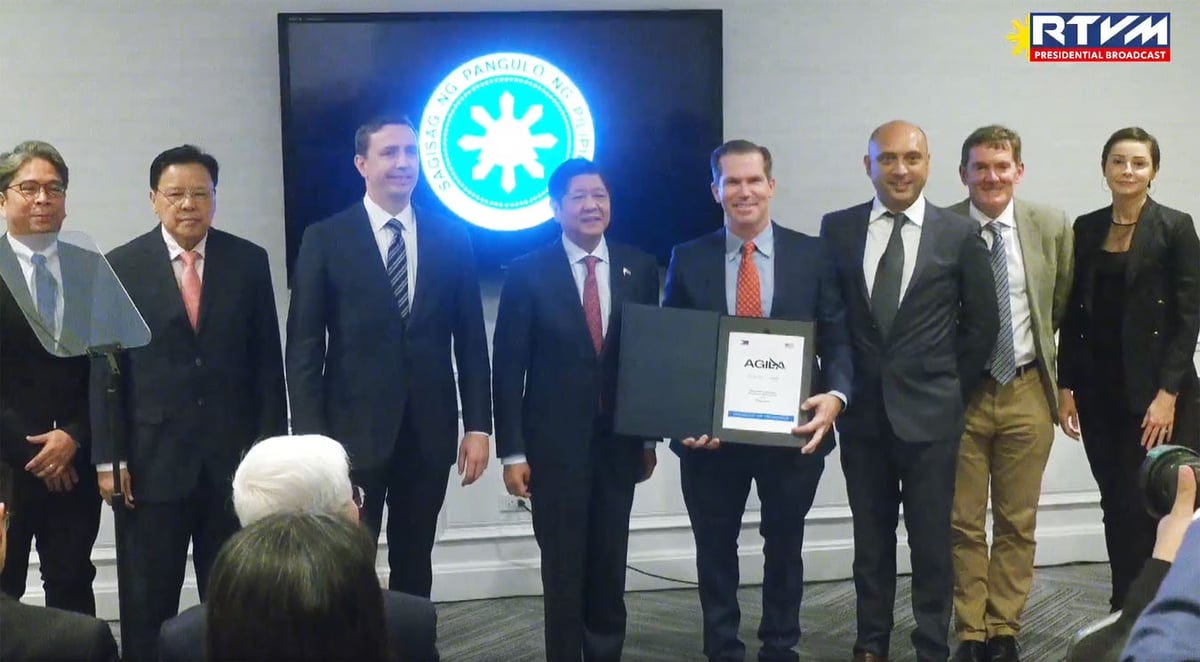Southeast Asia Space Roundup: 25 December 2024 to 8 January 2025
A summary of all the space news in Southeast Asia over the past two weeks, brought to you by AzurX

The following are the major space developments in the Southeast Asian region tracked by Southeast Asia Space Monitor over the past two weeks:
Philippines Space Developments
Agila-1, Philippine’s First Communication Satellite, Successfully Launched
SpaceX successfully launched four broadband satellites built by Astranis into geostationary orbit on 29 December 2024, marking a significant milestone for the company. Among the satellites launched was Agila-1, the first communications satellite dedicated to the Philippines, which was sold to Orbits Corp., a subsidiary of Philippine internet service provider HTechCorp. Agila-1 is set to enhance satellite connectivity in the region, offering critical communications infrastructure to the Philippines. The other three satellites—NuView Alpha, NuView Bravo, and UtilitySat—serve various customers, including inflight connectivity (IFC) provider Anuvu and Apco Networks in Mexico. UtilitySat, in particular, will provide initial capacity for Apco Networks ahead of the launch of two dedicated satellites in 2025. With this launch, Astranis continues to build its reputation as a leader in small GEO satellite manufacturing, having now launched more satellites to GEO over the past two years than any other operator. This achievement underscores the growing role of small GEO spacecraft in regional markets, such as the Philippines, where satellite internet is increasingly crucial for connecting remote and underserved areas.
Philippines’ Agila-1 Communication Satellite Expected to Increase Digital Competitiveness
The successful launch of the Agila-1 communication satellite marks a significant milestone in the Philippines' quest for universal internet connectivity. Spearheaded by Orbits Satellite Corporation under its president Augusto Baculio Jr., the satellite aims to revolutionize the country's digital landscape by providing reliable, affordable internet, particularly in underserved rural communities. Agila-1 addresses connectivity challenges posed by the Philippines' unique geography, ensuring uninterrupted service even during natural disasters such as typhoons. The satellites’ deployment is expected to drive socio-economic growth by improving access to education, healthcare, and e-commerce, and enhance the country's global competitiveness. This initiative is poised to foster innovation, promote tech entrepreneurship, and attract investment, advancing the Philippines' digital transformation and fostering a more connected and resilient society.
Starlink in the Philippines: The Geopolitical Implications
Starlink's expansion into the Philippines is not just a business move but a strategic maneuver in the broader U.S.-China geopolitical rivalry, writes columnist James Indino in the Daily Tribune. The Philippines' long-standing alliance with the United States, strengthened by mutual defense treaties and cultural ties, provides an ideal operational environment for Starlink. The satellite internet service, operated by U.S.-based SpaceX, offers an alternative to Chinese-backed telecommunications infrastructure, particularly in the wake of growing concerns about Chinese involvement in global 5G networks. Starlink’s deployment in the Philippines strengthens U.S. technological influence in Southeast Asia, especially amidst rising tensions in the South China Sea. The Philippine government's swift approval of Starlink’s services underscores its preference for Western technology partners, marking a significant alignment with U.S. interests. Beyond commercial benefits, Starlink’s presence enhances regional security by providing reliable communication networks that support maritime security and monitoring in disputed waters, further cementing the Philippines' strategic importance in the Indo-Pacific region. This development highlights how commercial technology deployments increasingly serve geopolitical objectives, positioning Starlink as a key player in the evolving balance of power in Southeast Asia.
Indonesia Space News
Indonesia Urged to Use LEO SATCOM to Increase Digital Competitiveness
Member of Commission I DPR RI, By Soleh, has urged Indonesia's Ministry of Communication and Digital Affairs (Komdigi) to accelerate efforts to improve internet access across the country. This call follows the release of the World Digital Competitiveness Ranking (WDCR) 2023, which showed Indonesia's rise to 45th globally, up from 51st in 2022. While Indonesia ranked higher than countries like India and the Philippines in digital competitiveness, it still lagged behind regional peers such as Singapore, Malaysia, and Thailand. Additionally, Indonesia's fixed broadband speeds remain low, with average download speeds of 14.16 Mbps and upload speeds of 9.5 Mbps, significantly below the global average. Soleh suggested that low-Earth orbit (LEO) communication satellites could help address the challenges of equitable internet access and improve service efficiency, as part of the government's broader goals for regional development and digital inclusion.

Indonesia’s Government Continuing Studies for SATRIA-2 COMSAT into 2025
The Telecommunications Accessibility Agency (BAKTI), under Indonesia's Ministry of Communication and Digital Affairs, has confirmed that studies for the development of the SATRIA-2 communications satellites will continue throughout 2025. SATRIA-2 will consist of twin geostationary satellites, SATRIA-2A and SATRIA-2B, designed to provide high-speed internet services with a total capacity of 300 GB per second. This initiative aims to improve Indonesia's internet quality, especially in underserved regions, ensuring greater stability and speed. The satellite project, alongside the Palapa Ring Integration, is part of BAKTI's broader effort to achieve equitable digital connectivity across Indonesia, particularly in remote areas that cannot be served by terrestrial infrastructure. The project is also expected to be included in the Bappenas Green Book, emphasizing its importance for the country’s digital infrastructure and connectivity goals.
Analyst: Indonesia’s Starlink Deployment Faces Regulatory Issues, Infrastructure Unreadiness, and Local Resistance
In Modern Diplomacy, Darynaufal Mulyaman writes that Asia’s digital divide continues to be a significant challenge, with countries like Indonesia and South Korea facing connectivity issues, particularly in remote areas. SpaceX’s involvement in the region, through its Starlink satellite internet service and SpaceX launches, is helping bridge this gap. South Korea's collaboration with SpaceX on the 425 satellite project, which enhances national security through military reconnaissance satellites, highlights a growing trend of utilizing commercial space services. This partnership aligns with the UN’s Sustainable Development Goal (SDG) 9, fostering international cooperation and advancing space technology. In contrast, Indonesia’s experience with Starlink has focused on improving internet access, particularly in underserved areas, with the service offering the potential to boost digital economic growth and improve sectors like education and healthcare. However, Indonesia faces challenges in terms of regulatory issues, infrastructure readiness, and local resistance, making Starlink’s impact less seamless compared to South Korea’s collaboration. The differing experiences of Indonesia and South Korea underscore the importance of tailored solutions and local readiness in leveraging satellite technology for digital transformation.
Vietnam Space Developments

Vietnam Sets Out Long-Term Strategy for Digital Transformation, Emphasizing Satellite Data and Earth Observation
Vietnam's government has announced an ambitious strategy to drive the country's digital transformation and technological advancements, aiming for the digital economy to contribute 30% of GDP by 2030 and 50% by 2045. Key to this initiative is mastering emerging technologies, including satellite imagery data, positioning Vietnam as a regional hub for digital innovation. By 2030, the country aims to rank among the top 50 globally in digital competitiveness, with specific targets in artificial intelligence, satellite technology, and other cutting-edge fields. Satellite data and infrastructure are integral to Vietnam's plans, enhancing its capabilities in Earth observation and managing national resources, and supporting sectors such as digital governance, e-government, and cybersecurity. The 2045 vision includes transforming Vietnam into a developed, high-income country, with the digital economy accounting for half of GDP and attracting leading international technology companies. The strategy also emphasizes the development of human resources and the establishment of advanced digital infrastructure to support these objectives.
Report: Potential SpaceX Investment in Vietnam Will Boost Digital Transformation
Vietnam is poised for a major leap in its digital infrastructure with the potential investment of US$1.5 billion from SpaceX for its Starlink satellite internet services. The planned expansion will provide nationwide satellite internet coverage, especially benefiting remote and underserved regions. As Vietnam's digital economy grows, this investment will help address challenges in internet connectivity, especially in areas where traditional infrastructure is limited. With high-speed internet, easy installation, and global coverage, Starlink offers a competitive alternative to existing terrestrial providers, which struggle with slow speeds and infrastructure gaps. This satellite technology also supports the Vietnamese government's goals for universal internet access and will be pivotal in enhancing educational and healthcare access, as well as bolstering disaster management. With the increasing reliance on the internet for economic and social development, Starlink's entry into the market marks a critical milestone in Vietnam’s digital transformation.
Singapore Space News

Singapore’s NUS High School Builds Nanosatellite to be Launched by SpaceX in March 2025
For the first time, students from Singapore's NUS High School have successfully built a nanosatellite, which will be launched into space aboard a SpaceX rocket in March 2025. The satellite, a 10cm cube weighing just under 900g, will take photographs of the Earth from low-Earth orbit, marking a significant achievement for the school’s Galileo program. The project, which began five years ago, involved designing and building the satellite's components from scratch, including custom circuit boards and software. This hands-on approach provided the students with practical experience in space engineering, including environmental testing and solving challenges like data compression for limited bandwidth. Mentored by aerospace company NuSpace’s CEO Ng Zhen Ning, the project aims to inspire the next generation of space engineers in Singapore. The success of this mission sets the foundation for future, larger satellite projects and supports Singapore’s growing space industry aspirations.
SpaceX Establishing Office in Singapore to Handle Regional Starlink Business
SpaceX is expanding its operations in Singapore by establishing accounting and finance teams to support its satellite internet provider unit, Starlink. The company is recruiting for treasury and tax roles to strengthen Starlink's operations in the Asia-Pacific region. Job listings on the recruitment portal JobsDB and a recent LinkedIn profile update from a newly hired director of financial operations indicate that SpaceX is building accounting and tax teams from the ground up to support its growing presence in the region. This move highlights SpaceX's strategic focus on expanding its infrastructure and operations in Southeast Asia.
Other Regional Space Developments

Malaysia’s Sarawak to Develop Air Launch Capability for Microsatellites
Spaceport Malaysia, Spaceport Sarawak Chapter, and Astrum Dynamic Sdn Bhd have signed a memorandum of understanding (MoU) to develop a satellite launch methodology for Sarawak, Malaysia, focusing on the proposed Sarawak Light Airlaunch System for High-Altitude and Orbital Access (SLASH). SLASH, a hybrid jet and rocket-powered air-launch system, is designed to deploy microsatellites like the Kenyalang-1, a 45kg satellite for the Sarawak government, into orbit. The system offers several advantages, including cost-effectiveness, reusability, and the ability to launch from conventional airports without the need for large ground-based infrastructure. SLASH’s flexibility and low operational costs make it an appealing option for Sarawak’s space ambitions. The Kenyalang-1 satellite, with its advanced superspectral telescope, will be used for applications in agriculture, urbanization, and environmental monitoring. The initial studies for this initiative are expected to take six months to finalize.
Thailand Using China’s Beidou GNSS for Smart Agriculture
Thailand is leveraging China's smart farming positioning, navigation, and timing (PNT) technology to modernize its agricultural sector, with a focus on improving efficiency and reducing costs. The introduction of Huida Tech’s autopilot steering system on tractors is already benefiting farmers like Somboon Songwainiaw, who has reduced operational costs significantly by automating fieldwork. The system, which uses the Beidou satellite navigation system and sensors for precise operations, has proven especially beneficial during peak seasons when labor shortages are common. Huida Tech, a leading provider of smart farming solutions, has already equipped over 35,000 systems globally, and its technology, including drones for efficient pesticide spraying, is being piloted in Thailand. With 43% of Thailand’s land dedicated to agriculture, there is substantial potential for further expansion of smart farming, which could enhance productivity and help address challenges posed by climate change. The Thai government is also supporting these innovations, with plans for an innovation center by Huida Tech and an emphasis on technology training for farmers to ensure long-term sustainability.

Japan Donates Geospatial Platform to Cambodia for Land Management and Urban Planning
The Government of Japan has provided Cambodia with a $7.2 million grant to support the country's land registration and urban planning efforts, including satellite imagery, thematic maps, 3D city planning data, and a geospatial data platform. This assistance, formalized in a signing ceremony between Cambodian Minister of Foreign Affairs Prak Sokhonn and Japanese Ambassador Atsushi Ueno, aims to address land conflicts and promote sustainable urban and regional development. The geospatial platform will enable efficient data management, benefiting multiple ministries, including Land Management, Urban Planning, and Environment. Japan's support underscores its commitment to Cambodia's socio-economic development and strengthens the strategic partnership between the two countries.
Be sure to catch up with space activities in the region in the next edition of Southeast Asia Space Monitor’s space roundup!




